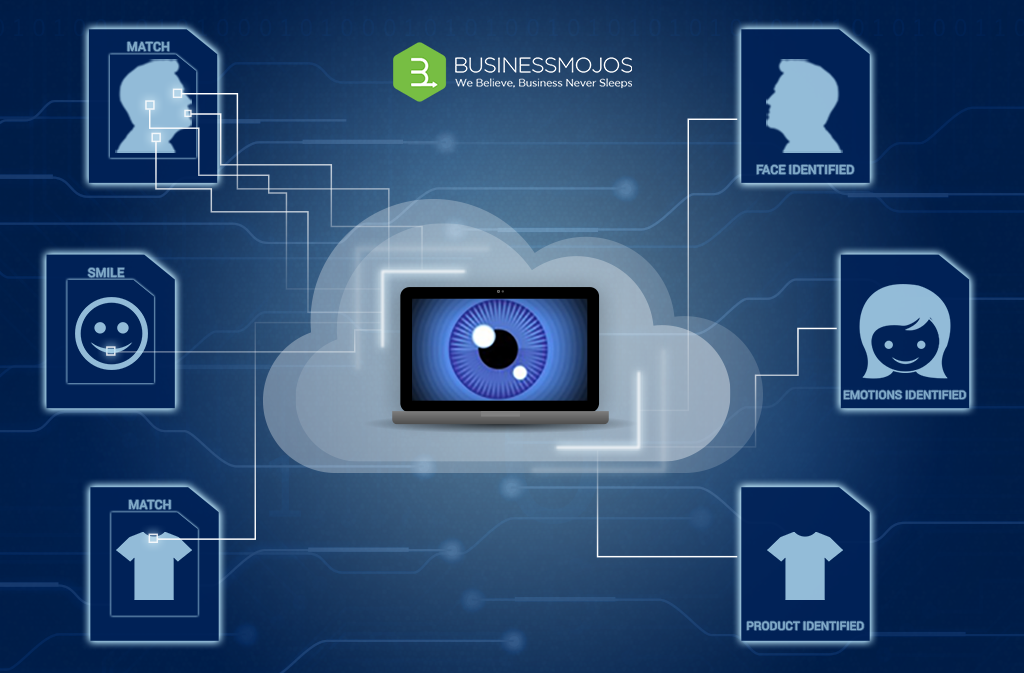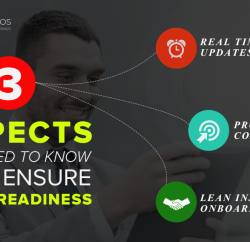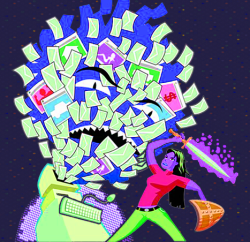Can computers differentiate between a Cat and a Dog?
Yes, they can!
You may be surprised to know, that like us computers can now recognize faces, natural patterns, colors, shadows, motion, distance and other nuances which makes our vision special. Artificial intelligence platforms can even tell how emotionally engaging a video or image is.
No! Terminators will not be rising any time soon and Sky Net ain’t becoming self-aware. I’d stick to something that makes marketing sense because this isn’t a place to explore urban myths.
Well, what’s the big deal here for marketers?
Mobile devices are going to revolutionize the way products and services are marketed to your customers. Machine perception of human emotions is rapidly evolving to suit the requirements of most needy marketers. Tractica’s market intelligence report predicts, ‘Computer vision market is expected to touch $33.3 billion by 2020 that’s compounded annual growth of 24 percentage’.
Artificial intelligence and computer vision is helping computers to match, distinguish and relate to 3D profiles such as human faces, homes, land marks, furniture and more. Computer Vision technology can even detect pattern, gauge distance, and differentiate texture and color. This technology can now also match the primates in terms of visual recognition.
When image sensors and processors are coupled with data relay methods inspired by human eye’s working process, we get a technology which is as good as the vision of primates. Computer Vision combines artificial intelligence software, neurobiology and physics to develop artificial intelligence system which processes image, analyses it and recognises it. Such a robust technology could find innovative uses in medicine, marketing, big data etc, That’s way I feel it’s time computer vision in marketing.
Marketers can make good use of Computer Vision apps in diverse areas such as:
Brand Discovery and Brand Sentiment Analysis Using Images
- Your customer can discover products using photos appearing in print ads or social media ads
- You customer can determine product specifications using product images appearing in print ads
- Your internet branding struggles could be analyzed using brand related image content by looking at:
- Number of times your branding element or messages appear in social media
- Pictures geo tagged in brand destinations ( e.g. Disney World Honk Kong or Google’s Paulo Alto office)
- Promotions mentioning your brand by 3rd party and customers
- Finding excitement connected with your business or brand specific to a context
Contextual Analysis of Business Mentions:
Context of the brand mention is crucial. With the help of computer vision videos or images could be easily associated with a place, event or an occasion. According to a recent survey, about 1.8 billion photos get shared on social media, if context of these photos are available to marketers they can follow a relevant segment of customers and serve context specific content or ads to them.
Images and video can helps marketers to see customer sentiments and engagement with their brand or business. Photos and videos on the social internet gives marketers contextual intelligence of their target market like?
- Where or when was the mention generated?
- From which location did the mention originate?
- Which event generated maximum mentions?
Real Time Focus Groups
Facial expression is a door to a person’s mind. Computer vision tools could help you analyze excitement or joy; passion or boredom, sadness or irritation etc. Affectiva is a global leader in this technology.
Computer Vision can let you know:
- How does your customer feel after looking at your product online?
- Has watching your advertisement created an anticipated emotion and engagement in your customer
- It can tell engagement level of different marketing materials, e.g. reading a review or watching your product video
Emotion sensing software in your app, car, oven or fridge will sense customer emotions and intuitively adapt real time without requiring any effort from your customer. Thus, computer vision based analytic tools give marketers the ability to tap into real time focus groups to check customer responses to brand events, prime time promotions etc.
Image Search in Fashion Ecommerce
Fashion and apparel e commerce is predicted to have an explosive global growth of about 6-7 percent till 2020.
If computer vision powers your ecommerce app even an offline interaction by ‘Madam Somebody’, who liked Kiera Knightley’s Empire line gown, the dress she wore to the Oscars, could have a potential online purchase. If customers are given a chance to search for specific fashion accessories and apparel without too much effort, most often they will buy from the ecommerce site. Computer Vision enabled apps can help our Kiera Knightly admirer to get the gown by just clicking a picture of the gown to check it on any e-commerce site.
In this case, your customer may be also interested in similar gowns, therefore technologies that can recognize an image, classify, index, tag and group similar images is needed. Computer Vision apps can sort images based on the color, pattern and other visual attributes and find gowns similar to one being like our ‘Knightly’ fan, would be of great help to the customer.’
Augmented Reality in Ecommerce:
Jane wants to give a face-lift to her apartment, she’d love to have a look at every detail of the design job, but she’s got only little time on her hands. Now what?
If I were Jane, I’d use Autodesk Home-style or any free alternative of it.
These tools let Jane quickly make a 2D or 3D model of her apartment using her mobile or tablet. A huge collection of drag and drop “modules” of home improvement and home décor like lights, antique windows and doors, floor or wall carpets, space saving furniture, floor and wall types etc. should be available inside the software.
Such a software makes her home improvement job easy. Increasingly many buyers would be using augmented reality based applications to purchase durable consumer goods. Thus, companies looking to gain foothold in the market should bring their home décor products to such platforms.
One Click Purchases:
Amazon’s Dash is a paste it anywhere button, its Wi-Fi connection enables user to order house hold goods. Dash has a simple way to order goods when it is about to get empty, but it has to be installed in specific points connected to a product’s use such as kitchen sink, refrigerator etc. so many Dash buttons in different parts of your house. One hick-up of dash button, is that it needs to be connected to the Wi-Fi before it could help you with your shopping.
In the future computer vision could come to your rescue. Imagine on a hot Texas summer day, you feel thirsty and find that in your fridge there’s just a bottle of beer, it’s natural that you feel a need for more beer. Then you use a shopping app and click a pic of a Budweiser bottle, –right then— you would be greeted with prompts on your phone, such as –I want to order now, I want to rate the product, please check for alternatives etc.
Using Computer Vision in mobiles is ridiculously simple and is an affordable way for retail and e-commerce companies to instantly connect with customers to fulfil an unmet need.
Online Advertising:
Computer Vision can be used to optimize real time online and mobile ads. This technology is splendid because it gives the advertiser the power to make any type of ads or video promotions match the unique look and feel of a publisher’s website.
Crunchbase reported that Trip lift raised about $10.5 Million in funds, solely due to its leadership in real time ad delivery.
Personally, I feel computer vision could revolutionize business to customer content delivery. Let’s imagine each ad content specifically optimized browsers, websites or social platforms. This technology could deliver individual specific content according to specific patters and trait they exhibit on the web. User behavior content like often used content preferences, gestures, pace of reading, topics preferred or environment and location specific adjustments could augment online ad delivery.
Computer Vision is the next big data frontier
According to internet live stat every day on an average 45000 Instagram photos, 660000 tweet are made and 1.5 hours of videos are posted on the social web. That’s heaps of brand related data waiting to be explored, this treasure trove of consumer perceptions could only be analyzed by application of computer vision based big data technologies.
Branding analytics for Web 2.0
Millions of people react to big announcements, viral content from organization create waves of publicity but till recently marketing analytics wasn’t powerful enough to see what is happening at a micro level in relation to a brand. Computer Vision based analytics tools can help companies to bridge this data gap.
We find people are posting a lot of pictures, videos, vines and mashups in social media. This external interaction can’t be measured by semantic emotional analytics platforms.
Thus, a big data platform looking to bridge this gap should look for branding elements like logo, slogan, branding colors appearing in videos or images. And look for product walk through videos like reviews and product test videos. Also finding product or brand appearing in popular events, TV slots, News, user generated feature films or short films etc can be helpful. Now a days Selfies with your product or brand in it can exponentially increase your brand exposure.
Computer Vision, lets your software to check for images and videos to generate big data visualization which can supplement other marketing data metrics originating from websites or mobile apps.
Autonomous Delivery Bots (Drones)
Drones are everywhere now, they play vital roles in law enforcement, film making, defense, and disaster management. These days, with advancement in computer vision your FedEx deliver repetitive could be replaced by a delivery drone.
Google’s Wing project, Amazon’s Prime Air and Alibaba’s drone all of these projects are trailblazing ecommerce drone prototypes. These technologies are an combination of quad copters mechanics, navigation systems and computer vision. Computer Vision helps these flying delivery bots to analyses patterns such as: geographical features, landmarks or building features to delivery you the package exactly where you are.
Hundreds of test runs of these technologies have already happened in North America, China and Australia. In the future when you order a pizza, a Dominos drone might drop in at your door step and deliver your favorite Cheese Crust.






